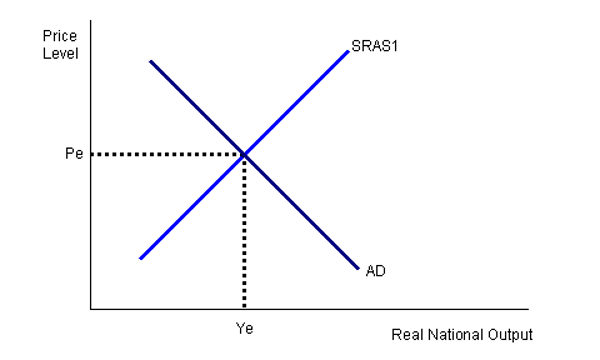Chapter 15
1/19
There's no tags or description
Looks like no tags are added yet.
Name | Mastery | Learn | Test | Matching | Spaced |
|---|
No study sessions yet.
20 Terms
What is the name given to the macroeconomic equation MV = PQ?
basic velocity of money equation
basic quantity equation of output
basic quantity equation of money
basic velocity of price equation
basic quantity equation of money
When the central bank lowers the reserve requirement on deposits:
the money supply increases and interest rates decrease.
the money supply and interest rates decrease.
the money supply and interest rates increase.
the money supply decreases and interest rates increase.
the money supply increases and interest rates decrease.
A central bank that desires to reduce the quantity of money in the economy can:
raise the reserve requirement.
buy bonds in open market operations.
lower the discount rate.
engage in quantitative easing.
raise the reserve requirement.
If the economy is at potential GDP and the Central Bank adopts an expansionary monetary policy that shifts aggregate demand to the right, in the long run, the Central Bank will __________________.
create an inflationary increase in price level.
create an increase in GDP.
create an increase in unemployment.
create a deflationary loss in price level.
create an inflationary increase in price level.
If nominal GDP is 2700 and the money supply is 900, what is velocity?
25
13.5
3
.33
3
Atlantic Bank is required to hold 10% of deposits as reserves. If the central bank increases the discount rate, how would Atlantic Bank respond?
by noting a decrease in net worth
by increasing its reserves
its balance sheet will be unchanged
it can make more loans with increased loan assets
by increasing its reserves
Regardless of the outcome in the long run, ______________________ is designed to stimulate the economy in the short run.
expansionary monetary policy
contractionary monetary policy
reverse quantitative easing policy
tight monetary policy
expansionary monetary policy
What term is used to describe the interest rate charged by the central bank when it makes loans to commercial banks?
discount rate
reserve requirement
Fed rate
open market rate
discount rate
_______________ will often cause monetary policy to be considered counterproductive because it makes it hard for the central bank to know when the policy will take effect?
Altering the discount rate
Reserve requirements
Long and variable time lags
Quantitative easing
Long and variable time lags
Which of the following terms is used to describe the proportion of deposits that banks are legally required to deposit with the central bank?
discount requirements
deposit requirements
reserve requirements
monetary requirements
reserve requirements
When the Federal Reserve announces that it is implementing a new interest rate policy, it is actually targeting a change in the ____________________.
real interest rate
consumer lending rate
nominal interest rate
federal funds rate
federal funds rate
If the economy is in recession with high unemployment and output below potential GDP, then __________________ would cause the economy to return to its potential GDP?
a tight monetary policy
fewer loanable funds
a loose monetary policy
higher interest rates
a loose monetary policy
If nominal GDP is 1800 and the money supply is 450, then what is velocity?
25
4.5
4
22
4
According to the basic quantity equation of money, if price and output fall while velocity increases, then:
the quantity of money will rise.
the quantity of money will fall.
the quantity of money will rise before it falls.
the quantity of money will rise slowly.
the quantity of money will fall.
When the central bank decides to increase the discount rate, the:
money supply increases.
interest rates decrease.
interest rates are unaffected.
interest rates increase.
interest rates increase.
Which of the following is described as an innovative and nontraditional method used by the Federal Reserve to expand the quantity of money and credit during the Great Recession of 2007-2009?
increased discount rate
increased reserves requirements
open market operations
quantitative easing
quantitative easing
When a Central Bank makes a decision that will cause an increase in both the money supply and aggregate demand, it is:
following a loose monetary policy.
following a tight monetary policy.
following a contractionary monetary policy.
reversing quantitative easing.
following a loose monetary policy.

If the economy is at equilibrium as shown in the diagram above, then an expansionary monetary policy will:
have no effect on both unemployment and inflation.
reduce unemployment, but increase inflation.
reduce both unemployment and inflation.
reduce unemployment, but have little effect on inflation.
reduce unemployment, but increase inflation.
If GDP is 3600 and the money supply is 300, what is the velocity?
18
8
4.57
12
12
If a Central Bank decides it needs to decrease both the aggregate demand and the money supply, then it will:
follow expansionary monetary policy.
follow loose monetary policy.
follow tight monetary policy.
follow quantitative easing policy.
follow tight monetary policy.